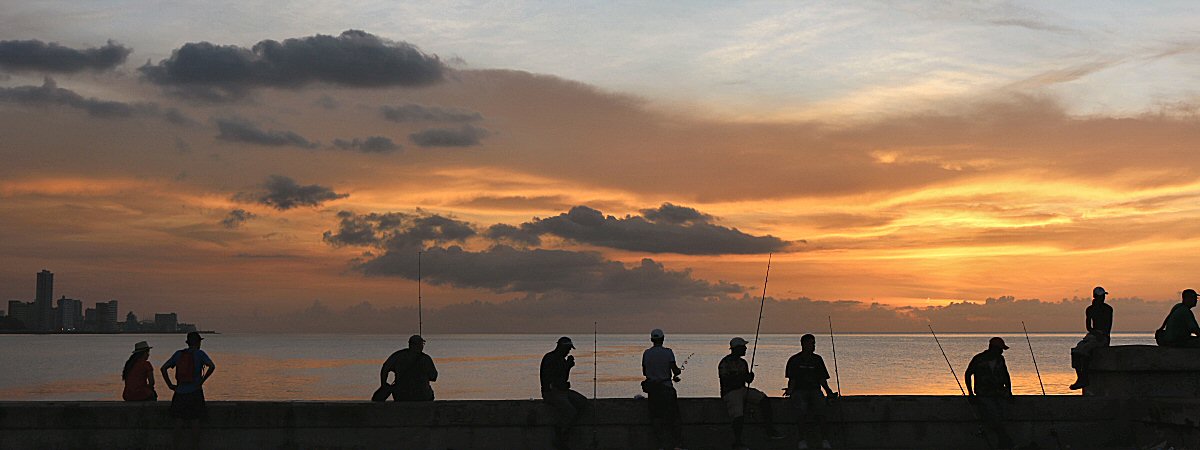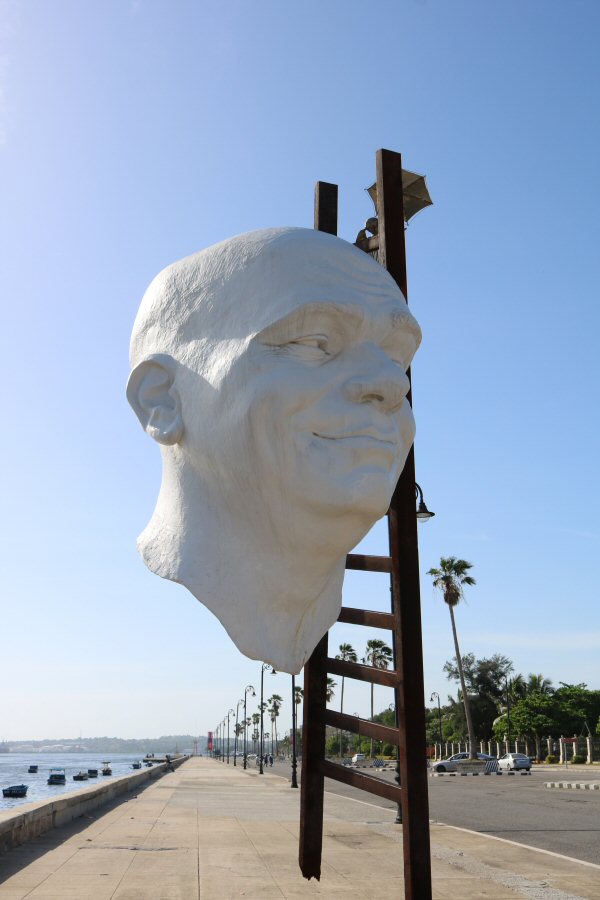
The first step to construct this
avenue was taken during the temporary military occupation of
the US in 1901, following the end of Cuba's war
for independence from Spain. The appointed US military
governor, the Major General Leonard Wood, entrusted the
engineers Mead and his assistant Whitney to build the first
stage of the avenue, starting from the Castillo de San
Salvador de la Punta. It was aimed at the protection of the
seaside of Havana from the effects of the sea, like the
flood of the ocean and big waves. Until 1902, only the first
500 meters of the avenue was completed, reaching the corner
of the Crespo street. A roundabout with a gazebo was
constructed for the municipal band at the intersection of
the Paseo del Prado (current Paseo de Martí) to entertain
the area with Cuban music within the celebration of the new
avenue every Sunday. This roundabout with gazebo that is the
first construction in Cuba made of reinforced concrete and
steel rebar, was demolished in 1926, when the construction
of the Avenida del Puerto began, as it was blocking the
traffic considerably. Upon the increase in the popularity of
the place, an exclusive hotel, Hotel Miramar, was built at
the same corner in 1903 that doesn’t exist today. The hotel
and its restaurant, where for the first time in Havana the
waiters wore tuxedos (dinner jackets) and gold-buttoned
waistcoats, were very famous during the first 15 years of
the Republic. Its owner was also the owner of another hotel
in Havana, the Telégrafo. On its lot a new hotel, the Hotel
Prado y Malecón, is on the construction today that is
expected to be put in service in 2020.
The construction team posed many
difficulties due to the irregular reefs that required
excessive use of cement as filling material. The North
American company intended to plant trees and to erect
beautiful lampposts along the avenue, but the big waves
during the winter, beating on the reefs, led to cancel this
intention.
In 1909, the construction reached
the Belascoaín street (current Padre Varela street), but it
was necessary to fill the cove of San Lázaro in front of the
current Hermanos Ameijeiras Hospital to extend the road
further to west. After the filling operation that lasted for
three years, the avenue was carried to the Torreôn de San
Lázarro. However, the cyclone in 1916 threw huge pieces of
concrete from the filled area that damaged the buildings
nearby. Consequently, some engineers considered the
construction of Malecón responsible for the destruction.
Although the avenue between the Torreôn de San Lázarro and
the 23. street was completed in 1921, the section in front
of the cove of San Lázarro couldn’t be reconstructed until
1923.
The promontory of the Loma
Tanganana (Hill of Tanganana) on which the Batería de
Santa Clara was deployed (on that plot Hotel Nacional de
Cuba stands today), was complicating the construction of the
avenue, so that a large area of the sea of about 100.000 m2
was filled between the O street and the 23th street and the
obtained ground was dedicated to the construction of Malecón,
as well as the Monumento al Maine in 1923. Thus, the avenue
could extend from the Castillo de San Salvador de la Punta
to the corners of K and L streets, an area approximately
where the US Embassy stands today. For several years the
construction process of the west part of Malecón was
intercepted, as the government gave weight to the
prolongation of Malecón to the south, up to the Castillo de
la Real Fuerza to be able to access the port from Vedado
(from Centro Habana) easily.
According the project to prolong
Malecón to south, about 110.000 m2 of the sea had to be
filled and the obtained area was allocated to the avenue, as
well as to the parks (current Parque Luz Caballero and
Parque Céspedes). The construction of the avenue was
undertaken by the contractor firm Arellano y Mendoza at a
cost of about 2 million pesos. It is estimated that the
filling of the sea costed additional one million pesos. The
construction of this section began in 1926 and was completed
in 1929.
At every 2,5 meters reinforced
concrete sheet piles were driven to the ground, forming two
rows along the road. The ground between the sheet piles was
augmented by reinforced concrete on which large hollow
blocks of reinforced concrete were placed. These blocks had
an area of 4 x 5 meters on average and a height of 2 meters.
They were placed on a base filled with concrete cement and
augmented by sheet piles. The blocks were prefabricated in a
plant in Ensenada de Guasabacoa (Cove of Guasabacoa; one of
the two big coves of the Havana Bay). During the
construction of this section about 17 thousand tons of
Portland cement, about 22 thousand m3 of sand, about 45
thousand m3 of pebble and about 4 thousand tons of steel
bars were used.
The prolongation of the Malecón to the west resumed in the time of Carlos Miguel de Céspedes, the Minister of Public Works, and the avenue reached the G street (current Avenida de los Presidentes) in 1930. After a long discontinuance, in 1955 the avenue reached the Avenida Paseo, where the Fuente de la Juventud stays today. At the beginning of 1950s, it was intended to extend Malecón until the corner of 12th street that corresponds to the point where the Almendares river meet the sea and to construct a suspension bridge between there and the Avenida Primera, where it intersects with the O street today. In 1955 the Hotel Rosita de Hornedo was built at this place. It was a hotel that was exposed to a terrorist attack by the DRE militants (Directorio Revolucinario Estudentil) under the command of the CIA agent José Basulto in 1962. The hotel’s name changed to Hotel Sierra Maestra later. Towards the end of 1950s, the thought to go beyond the Almendaras river by a tunnel below its bed outweighed, so that the Pote bridge, named after the millionaire José López Rodríguez, nicknamed Pote, that was linking the Calzada street to the west of the Almendares river, was demolished and the Calzada tunnel that connected the fifth Avenue with Malecón, was constructed. The Calzada tunnel was completed in 16 months, being inaugurated in 1959. The contractor firm was the French Grands Travaux de Marseille, the company that also built the tunnel underneath the Bay of Havana.
Since 1960, Malecón suffered many
hurricanes. The flood and the strong waves undermined
several sections of Malecón, wafting heavy rocks onto the
avenue, but immediate repair was carried out by injecting
thousands of m3 of hydraulic cement to occlude the parts
eroded or perforated by the sea water.

